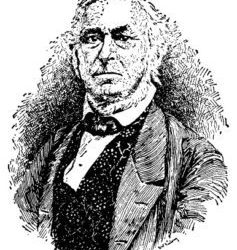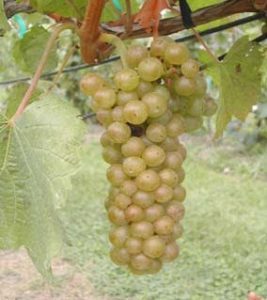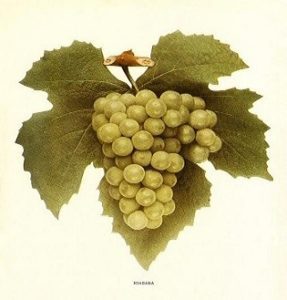#Crotonic Acid Market Size
Explore tagged Tumblr posts
Text
Crotonic Acid-Based Thickener Enhancing Protective Ability of Glossy Emulsion Paints
Crotonic acid is one of the vital ingredients used in the production of paints and coatings, due to its ability to develop copolymers when mixed with other chemical compounds. Additionally, crotonic acid monomer is also used for the formulation of a thickener, which is utilized in the production of glossy emulsion paints. These paints provide extra glowing effects and protective coatings to the interiors and exterior of buildings. Thus, the surging use of paints and coatings, owing to the booming construction and infrastructure industries, will fuel the adoption of crotonic acid in the coming years.
Moreover, the flourishing adhesives industry will help the crotonic acid market to grow at a CAGR of 7.9% during 2021–2025. According to P&S Intelligence, the crotonic acid market revenue stood at $592.0 million in 2020 and it is projected to reach $853.7 million by 2025. Huge quantities of the acid are used as a comonomer with vinyl acetate in the adhesive sector. The copolymers resulting from this chemical reaction are used in the formulation of acids. For example, hot melt adhesives are usually developed by grafting crotonic and acrylic acids onto metallocene ethylene–octene copolymers.

Geographically, China dominated the crotonic acid market in the recent past, and it is expected to retain its dominance in the coming years as well. Additionally, the country is also expected to consume crotonic acid at the highest rate in the foreseeable future. This can be attributed to the burgeoning demand for paints, coatings, and adhesives for the repair and renovation of residential and commercial buildings in the country. Moreover, the surging use of the acid as plasticizers, fungicides, and intermediates in the chemical, agriculture, and pharmaceutical industries, respectively, will augment the consumption of crotonic acid in the country in the coming years.
Thus, expanding paints and coatings and adhesives industries and burgeoning demand for automobiles will amplify the need for crotonic acid in the foreseeable future.
#Crotonic Acid Market#Crotonic Acid Market Size#Crotonic Acid Market Share#Crotonic Acid Market Growth#Global Crotonic Acid Market
0 notes
Text
Research On World Crotonic Acid Market Report 2022
World Crotonic Acid Market Research Report 2022 (covering USA, Europe, China, Japan, India, South East Asia and etc), is an informative market report offered by DecisionDatabases.com.
Crotonic Acid market research report provides the newest industry data and industry future trends, allowing you to identify the products and end users driving Revenue growth and profitability.
The industry report lists the leading competitors and provides the insights strategic industry Analysis of the key factors influencing the market.
The report includes the forecasts, Analysis and discussion of important industry trends, market size, market share estimates and profiles of the leading industry Players.
Final Report will cover the impact of COVID-19 on this industry.
Browse the complete report and table of contents @ https://www.decisiondatabases.com/ip/21560-crotonic-acid-market-analysis-report
The Players mentioned in our report
Weylchem Frankfurt GmbH
Xi’an Poly Science Co., Ltd
Zhejiang Huadee Dyestuff Chemical Co.,Ltd
Global Crotonic Acid Market: Application Segment Analysis
Copolymer coatings
Pharmaceuticals
Pesticides
Global Crotonic Acid Market: Regional Segment Analysis
USA
Europe
Japan
China
India
South East Asia
Download Free Sample Report of World Crotonic Acid Market @ https://www.decisiondatabases.com/contact/download-sample-21560
There are 10 Chapters to deeply display the World Crotonic Acid market. Chapter 1 About the Crotonic Acid Industry Chapter 2 World Market Competition Landscape Chapter 3 World Crotonic Acid Market share Chapter 4 Supply Chain Analysis Chapter 5 Company Profiles Chapter 6 Globalisation & Trade Chapter 7 Distributors and Customers Chapter 8 Import, Export, Consumption and Consumption Value by Major Countries Chapter 9 World Crotonic Acid Market Forecast through 2022 Chapter 10 Key success factors and Market Overview
Purchase the complete World Crotonic Acid Market Research Report @ https://www.decisiondatabases.com/contact/buy-now-21560
Other Reports by DecisionDatabases.com:
World Soya Fatty Acid Market Research Report 2025 (covering USA, Europe, China, Japan, India, South East Asia and etc)
World Glacial Acrylic Acid Market Research Report 2022 (covering USA, Europe, China, Japan, India, South East Asia and etc)
About-Us: DecisionDatabases.com is a global business research reports provider, enriching decision makers and strategists with qualitative statistics. DecisionDatabases.com is proficient in providing syndicated research report, customized research reports, company profiles and industry databases across multiple domains.
Our expert research analysts have been trained to map client’s research requirements to the correct research resource leading to a distinctive edge over its competitors. We provide intellectual, precise and meaningful data at a lightning speed.
For more details: DecisionDatabases.com E-Mail: [email protected] Phone: +91 9028057900 Web: https://www.decisiondatabases.com/
#Crotonic Acid#Crotonic Acid Market#Crotonic Acid Market Report#World Crotonic Acid Market#Crotonic Acid Industry#Crotonic Acid Market Size
0 notes
Text
Crotonaldehyde Market- Rising Demand in Chemicals and allied Industries to be the Major Market Driver
Crotonaldehyde appears as a clear, colorless to pale yellow liquid with a strong and suffocating odor. It is also known as 2-Butenal and 3-Methylacrolein. At room temperature it is extremely flammable and produces toxic vapors. Crotonaldehyde can be found naturally in emissions of specific vegetation and volcanoes and also many in foods in small amounts. Commercially crotonaldehyde is produced by aldol condensation from acetaldehyde. It has poor solubility in water. But it is easily soluble in organic solvents including alcohols and ether. Crotonaldehyde is mostly used in the manufacture of crotonic acid and sorbic acid by oxidation.
Crotonaldehyde Market Taxonomy
On the basis of end-use industry, the global crotonaldehyde market is classified into:
Pharmaceuticals
Rubber
Chemicals
Leather
Agriculture
Request Copy Of This Business Report: https://www.coherentmarketinsights.com/market-insight/crotonaldehyde-market-543
Crotonaldehyde Market Outlook
Asia Pacific and North America are expected to be the most potential markets for crotonaldehyde manufacturers. According to IBEF, the Indian leather industry holds a major share of around 12.93 per cent of the total world’s leather production of hides/skins. During April 2016-January 2017 leather and leather goods worth US$ 4.72 billion were exported from India. The estimated size of Indian chemicals sector stands at approximately US$ 139 billion. India is the seventh largest producer of chemicals in the world worldwide and third largest producer in Asia. In 2015-2016 the total production of the major chemicals including petrochemicals was 23.9 million tons.
Major Keyplayers: Finetech Industry Limited, Alfa Aesar, Sigma-Aldrich, GODAVARI BIOREFINERIES LTD., Tokyo Chemical Industry, Nantong Acetic Acid Chemical Co., Ltd., Ambinter, abcr GmbH, Celanese Corporation, Chemhere, Amadis Chemicals, MolCore, Haihang Industry Co., Ltd. and Vitas-M Laboratory.
About Us:
Coherent Market Insights is a global market intelligence and consulting organization that provides syndicated research reports, customized research reports, and consulting services. We are known for our actionable insights and authentic reports in various domains including aerospace and defense, agriculture, food and beverages, automotive, chemicals and materials, and virtually all domains and an exhaustive list of sub-domains under the sun. We create value for clients through our highly reliable and accurate reports. We are also committed in playing a leading role in offering insights in various sectors post-COVID-19 and continue to deliver measurable, sustainable results for our clients.
Contact:
Coherent Market Insights 1001 4th Ave, #3200 Seattle, WA 98154, U.S. Email: [email protected] United States of America: +1-206-701-6702 United Kingdom: +44-020-8133-4027 Japan: +050-5539-1737 India: +91-848-285-0837
0 notes
Text
Global Crotonic Acid Market Size, Share, Segments and Growth Factor Analysis Report 2028
The study on Crotonic Acid Market with its type and application sales analysis is very essential for all the decision-makers or strategists operating in this industry. The report is made by analysts with deep industry knowledge and experience. The global, regional, and country annual sales and revenue has been studied for the historical years and estimated for the current year. With the help of analytical tools, primary interviews, and data triangulation the report is enriched with quality data. The qualitative data on the upcoming industry trends with market triggers and risks are covered as a separate section in this comprehensive report.
As understood and analyzed in the global Crotonic Acid market report the growth CAGR in the year 2022 to 2028 is showing a promising inclination. The macro and microeconomic conditions are studied and forecast data is anticipated.
Click here to get a FREE Sample PDF Copy of the Crotonic Acid Market Research Report @ https://www.decisiondatabases.com/contact/download-sample-59831
As per this report analysis, the Crotonic Acid market is expected to show a CAGR (revenue) of xx% between the forecast years and the global market size can cross USD XX million by the end of 2028, growing from USD XX million in the year 2022. This report specifically covers the global market share (sales as well as revenue) of key companies in the Crotonic Acid business, as mentioned in a separate Chapter 3.
Regionally, the Crotonic Acid market data is studied under the below-mentioned regions and countries – Americas covering (United States, Canada, Mexico, Brazil), APAC covering (China, Japan, Korea, Southeast Asia, India, Australia), Europe covering (Germany, France, UK, Italy, Russia, Spain), Middle East & Africa covering (Egypt, South Africa, Israel, Turkey, and other GCC Countries).
This research study gives a comprehensive overview of market share and growth opportunities of the Crotonic Acid market as per type and application. The report also covers key manufacturers’ profiles with sales and gross margin data.
The key manufacturers covered in this report: Breakdown data in Chapter 3.
Tianjin Jinhui Pharmaceutical Group
Kono chem
WeylChem International GmbH
Zhengzhou Tuozhixiang Trading
EUCLID
Central Drug House
Henan Tianfu Chemical
ALB Technology
Penta Manufacturing Company
Spectrum Chemical Manufacturing
Others
To inquire about report customization, feel free to reach out to our team of expert analysts @ https://www.decisiondatabases.com/contact/ask-questions-59831
This study considers the Crotonic Acid value and volume generated from the sales of the following segments:
Segmentation by type: breakdown data from 2017 to 2022, in Section 2.3; and forecast to 2028 in section 11.7.
Pharmaceutical Grade
Industrial Grade
Segmentation by application: breakdown data from 2017 to 2022, in Section 2.4; and forecast to 2028 in section 11.8.
Chemical
Pharmaceutical
Paints & Coatings
Automobile
Packaging
Textile
The latest developments of the industry and the sales channel, manufacturing process along with the manufacturing cost study is covered in the report.
Key Questions Answered –
What will be the Crotonic Acid market CAGR and size between 2022-2028?
Who are the top/leading players of the Crotonic Acid market?
What changes are expected in the Crotonic Acid market in the next six years?
Which are the top product and leading applications of the Crotonic Acid market?
What are the leading market drivers and major risks factors for the Crotonic Acid market?
Which region/country leads and foresees highest growth in the next six years?
Purchase the Complete Global Crotonic Acid Market Research Report @ https://www.decisiondatabases.com/contact/buy-now-59831
About Us:
DecisionDatabases.com is a global business research report provider, enriching decision makers and strategists with qualitative statistics. DecisionDatabases.com is proficient in providing syndicated research reports, customized research reports, company profiles, and industry databases across multiple domains. Our expert research analysts have been trained to map clients’ research requirements to the correct research resource leading to a distinctive edge over its competitors. We provide intellectual, precise, and meaningful data at a lightning speed.
For more details: DecisionDatabases.com E-Mail: [email protected] Phone: +91-93077-28237 Website || Official Blog || Insights Analysis
0 notes
Text
Crotonic Acid Business, Trade, Revenue, Profit and Loss 2021-2028
Market segmentation Crotonic Acid market is split by Type and by Application. For the period 2016-2026, the growth among segments provide accurate calculations and forecasts for sales by Type and by Application in terms of volume and value. This analysis can help you expand your business by targeting qualified niche markets.
Market segment by Type, covers Organic Traditional
Also Read: http://www.marketwatch.com/story/acetyl-serine-market-research-report-with-size-share-value-cagr-outlook-analysis-latest-updates-data-and-news-forecast-year-2021-07-05
Market segment by Application can be divided into Food Animal Feed Other
The key market players for global Crotonic Acid market are listed below: Georgia-Pacific Manas Xiangyun Chemical Fiber Swan Fiber (CHTC) Jinhanjiang Refined Cotton Fargona Kimyo Zavodi Global Komsco Daewoo Sriman Chemicals ADM Southern Cellulose Milouban North Sichuan Nitrocellulose Hubei Golden Ring Xinjiang Sunork Cotton Industry Zibo Huawei Biotechnology CELSUR Jinqiu Cotton Xinxiang T.N.C Chemical
Also Read: http://www.marketwatch.com/story/benzyl-alcohol-cas-100-51-6-professional-survey-market-size-share-value-and-competitive-landscape-2021-2026-2021-06-27
Market segment by Region, regional analysis covers North America (United States, Canada and Mexico) Europe (Germany, France, United Kingdom, Russia, Italy, and Rest of Europe) Asia-Pacific (China, Japan, Korea, India, Southeast Asia, and Australia) South America (Brazil, Argentina, Colombia, and Rest of South America) Middle East & Africa (Saudi Arabia, UAE, Egypt, South Africa, and Rest of Middle East & Africa)
The content of the study subjects, includes a total of 14 chapters: Chapter 1, to describe Crotonic Acid product scope, market overview, market opportunities, market driving force and market risks.
Also Read: http://www.marketwatch.com/story/food-grade-refined-cotton-market-with-size-share-value-cagr-outlook-analysis-latest-updates-data-and-news-2020-2026-2021-07-05
Chapter 2, to profile the top manufacturers of Crotonic Acid, with price, sales, revenue and global market share of Crotonic Acid from 2019 to 2021. Chapter 3, the Crotonic Acid competitive situation, sales, revenue and global market share of top manufacturers are analyzed emphatically by landscape contrast. Chapter 4, the Crotonic Acid breakdown data are shown at the regional level, to show the sales, revenue and growth by regions, from 2016 to 2026. Chapter 5 and 6, to segment the sales by type and application, with sales market share and growth rate by type, application, from 2016 to 2026. Chapter 7, 8, 9, 10 and 11, to break the sales data at the country level, with sales, revenue and market share for key countries in the world, from 2016 to 2021.and Crotonic Acid market forecast, by regions, type and application, with sales and revenue, from 2021 to 2026. Chapter 12, 13 and 14, to describe Crotonic Acid sales channel, distributors, customers, research findings and conclusion, appendix and data source.
Also Read: http://www.marketwatch.com/story/zirconia-ceramics-market-research-report-with-size-share-value-cagr-outlook-analysis-latest-updates-data-and-news-2021-2028-2021-06-30
List OF CONTENTS AND TABLES:
1 Scope of the Report
1.1 Market Introduction
1.2 Years Considered
1.3 Research Objectives
1.4 Market Research Methodology
1.5 Research Process and Data Source
1.6 Economic Indicators
1.7 Currency Considered
2 Executive Summary
2.1 World Market Overview
2.1.1 Global Crotonic Acid Consumption 2016-2026
2.1.2 Crotonic Acid Consumption CAGR by Region
2.2 Crotonic Acid Segment by Power Supply Type
2.2.1 DC
2.2.2 AC
2.3 Crotonic Acid Sales by Power Supply Type
2.3.1 Global Crotonic Acid Sales Market Share by Power Supply Type (2016-2021)
2.3.2 Global Crotonic Acid Revenue and Market Share by Power Supply Type (2016-2021)
2.3.3 Global Crotonic Acid Sale Price by Power Supply Type (2016-2021)
2.4 Crotonic Acid Segment by Application
2.4.1 Printing
2.4.2 Textile
2.4.3 Food Industry
2.4.4 Electronics
2.4.5 Plastic Industry
2.4.6 Others
2.5 Crotonic Acid Sales by Application
2.5.1 Global Crotonic Acid Sale Market Share by Application (2016-2021)
2.5.2 Global Crotonic Acid Revenue and Market Share by Application (2016-2021)
2.5.3 Global Crotonic Acid Sale Price by Application (2016-2021)
3 Global Crotonic Acid by Company
3.1 Global Crotonic Acid Sales Market Share by Company
3.1.1 Global Crotonic Acid Sales by Company (2019-2021)
3.1.2 Global Crotonic Acid Sales Market Share by Company (2019-2021)
3.2 Global Crotonic Acid Revenue Market Share by Company
3.2.1 Global Crotonic Acid Revenue by Company (2019-2021)
3.2.2 Global Crotonic Acid Revenue Market Share by Company (2019-2021)
3.3 Global Crotonic Acid Sale Price by Company
3.4 Global Manufacturers Crotonic Acid Producing Area Distribution, Sales Area, Product Type
3.4.1 Key Manufacturers Crotonic Acid Product Location Distribution
3.4.2 Players Crotonic Acid Products Offered
3.5 Market Concentration Rate Analysis
3.5.1 Competition Landscape Analysis
3.5.2 Concentration Ratio (CR3, CR5 and CR10) & (2019-2021)
3.6 New Products and Potential Entrants
3.7 Mergers & Acquisitions, Expansion
Also Read: http://www.marketwatch.com/story/agritourism-market-research-report-with-size-share-value-cagr-outlook-analysis-latest-updates-data-and-news-2021-2028-2021-06-25
4 Crotonic Acid by Region
4.1 Global Crotonic Acid by Region
4.1.1 Global Crotonic Acid Sales by Region
4.1.2 Global Crotonic Acid Revenue by Region
4.2 Americas Crotonic Acid Sales Growth
4.3 APAC Crotonic Acid Sales Growth
4.4 Europe Crotonic Acid Sales Growth
4.5 Middle East & Africa Crotonic Acid Sales Growth
5 Americas
5.1 Americas Crotonic Acid Sales by Country
5.1.1 Americas Crotonic Acid Sales by Country (2016-2021)
5.1.2 Americas Crotonic Acid Revenue by Country (2016-2021)
5.2 Americas Crotonic Acid Sales by Power Supply Type
5.3 Americas Crotonic Acid Sales by Application
5.4 United States
5.5 Canada
5.6 Mexico
5.7 Brazil
6 APAC
6.1 APAC Crotonic Acid Sales by Region
6.1.1 APAC Crotonic Acid Sales by Region (2016-2021)
6.1.2 APAC Crotonic Acid Revenue by Region (2016-2021)
6.2 APAC Crotonic Acid Sales by Power Supply Type
6.3 APAC Crotonic Acid Sales by Application
6.4 China
6.5 Japan
6.6 Korea
6.7 Southeast Asia
6.8 India
6.9 Australia
….….continued
CONTACT DETAILS :
+44 203 500 2763
+1 62 825 80070
971 0503084105
0 notes
Text
NY drinks NY wines: History and hybrids

New York Wines: Disaster in the Beginning
Historians have documented the fact that grapes were first introduced to New York by the Dutch (1647-1664); sadly, the crops failed. A few years later, the French Huguenot settlers in Ulster County tried to plant European varietals (1667) and they too were unsuccessful.

William Robert Prince (1795—1869)
Finally, in 1816 the Isabella grape was planted by William R. Prince (a descendant of Thomas Prince, an early Governor of the Plymouth Colony) in Linnaean Gardens (Queens, NY) and 2 years later (1818), Elijah Fay planted the first vineyard in Chautauqua County.

A few years later (1827) the first commercial vineyard and winery in the Hudson Valley opened (planted by Richard Underhill on Croton Point on the Hudson River). The Underhill’s are considered to be the first dynasty in American viticulture. It is the size and longevity of these vineyards that gives them the right to be considered the real founders of the wine-growing industry in New York.
Two years later (1829), in his rectory garden, the Revered William Bostwick planted the first vineyard in the Finger Lakes (Hammondsport, NY). Bostwick encouraged his neighbors to plant cuttings from the few Isabella and Catawba vines he was growing.

However, it took another decade for the wine industry to go commercial in the Hudson Valley. Finally, in 1839 Jean Jacques opened Blooming Grove (later rebranded as Brotherhood Winery) and by 1853 the Concord grape variety (introduced by Ephraim Bull of Concord, NH) became a popular wine and table grape. The Taylor Wine company entered the industry in 1880, followed by Widmer’s Wine Cellars in 1888 – placing New York on the world’s wine-making map. These enterprises produced sparkling and dessert wines (including ports and sherries), as well as table wines.
Wineries Expand
The Farm Winery Boom took place in the 1960s-1970s with new winery entrepreneurs. The entries included Benmarl Wine company and Cascade Mountain Vineyard (Hudson River Region), with Bully Hill Vineyards and Dr. Konstantin Frank’s Vinifera Wine Cellars in the Finger Lakes.

The Farm Winery Act (1976) opened the door to ownership and operations for a winery to produce less than 50,000 gallons of wine per year and sell directly to the consumer on the farm; today farm wineries can produce up to 150,000 gallons per year and can market wines to restaurants, retail and wholesale trade. As the Act evolved, it allowed winemakers to buy grapes from other New York growers and sell their wines in the same system, as long as the wines were made with 100 percent New York grapes.
Wineries continued to increase (1976-2017), reaching approximately 405, with 302 in Federally recognized viticulture regions: 20 in Lake Erie, 129 in the Finger Lakes, 62 in the Hudson River Region, 76 on Long Island, 7 I along the Niagara Escarpment and 7 in the Champlain Valley of New York with 103 wineries in other areas of the state.
Size Matters
Most new wineries are small, family-operated and focus on limited production of premium varietal table wines with the entire process, from planting of vines to wine marketing, controlled by the family. In addition to winemaking, visitors to the wineries are able to experience tours of the vineyards, and wine tastings and this aspect of the industry attracts 3 million tourists to New York each year.
NY Wine Industry Today
Today, New York is the nation’s third largest wine producing state with average annual production of approximately 20-million gallons. New York has 10 officially recognized viticulture areas that are compared to the French, “appellations of origin” and include Lake Erie, Niagara Escarpment; Finger Lakes; Seneca Lake; Cayuga Lake; Hudson River, Long Island; The Hampton, Long Island; North Fork of Long Island; and Champlain Valley of New York.
8th Annual NY Drinks NY. Workshop Focus

At a recent New York drinks NY wine event, scholars, sommeliers, buyers, sellers, and writers convened to learn about some of the unique hybrid grapes growing in New York State.

NY’s Hybrid Grapes
What is a hybrid grape? Hybrid grapes are grape varieties that are the product of crossing two or more Vitis species. They are also referred to an inter-specific crossing or “Modern Varieties” and have excellent tolerance to powdery mildew, other fungal diseases, nematodes and phylloxera.

New York Hybrid Grapes Presented
At the NY Drinks NY event, Sommelier Pascaline Lepeltier, MS and viticulturalist Mike Colizzi of the Cornell Agriculture Experiment Stations, Geneva, NY, presented a few of New York State’s hybrid grape varieties, including:

Vignoles. Developed by J. F. Ravat, a French hybridizer (1929), Vignole is a cross between Pinot Noir and a Seibel hybrid. Viticulture characteristics include: Hardy, late-ripening and moderately vigorous vine; moderate yielding with small, compact clusters. They are, however, susceptible to powdery mildew and bunch rot and capable of acquiring “noble rot” which, thankfully, produces excellent late harvest wines.
Vilification: Cool, tank fermentation; no malolactic fermentation; no barrel aging. Vignola���s are always finished with at least 1 percent residual sugar and frequently used to make sweet, late-harvest wines. Vignoles present an aromatic and tropical fruit nose but is somewhat one-dimensional and the natural high acidity must be balanced with sweetness. Late harvest wines have a strong aroma of apricot.
Demand for Vignoles is growing due to numerous awards in major competitions of late harvest and ice wines. These grapes can make high quality table wines and consumers are learning that it pairs well with spicier versions of Mexican and Oriental cuisine.

Traminette. (Formerly known as NY65.433.13). Officially introduced at the 4th International Symposium on Cool Climate Viticulture and Enology in Rochester, NY (July 1996), the Traminette is the result of a cross of Janes Serve 23.146 x Gewurztraminer by H.C. Barrett in 1965 at the University of Illinois.
Originally intended to be a table grape with Gewurztraminer flavor characteristics, this grape is distinguished by its superior wine quality combined with good productivity, partial resistance to several fungal diseases and cold hardiness. It is a late mid-season white wine grape that produces wine with pronounced varietal characteristics likened to one of its parents, Gewurztraminer.

Baco Noir. Monsieur Francois Baco (1865- 1947), was a teacher, living in Belus, Landes, Armagnac Province, France (south of Bordeaux). This French-American hybrid grape variety is produced as a red wine in NY State.
Its origins date back to 1894 when Baco crossed Follet Blanche (a traditional grape variety used to make brandies in Armagnac) with an unknown member of the New World’s Vitus riparian family (also known as “riverbank” or “riverside” grapes that are found along the banks of the eastern part of North America from southern Canada to the Gulf of Mexico to the Rocky Mountains). The intention was to create phylloxera-resistant vines that retained their French character. Baco was bred in 1902 and commercially released in 1910.
Light to medium body, with good acidity and a preference for cooler climate, Baco Noir is a grower-friendly alternative to Pinot Noir. If Baco is left on its skins for more than 7 days as it ferments – it can, with care, have many big Bordeaux-like qualities. It has a robust and aromatic flavor – cedar, tobacco, leather and chocolate. The complex fruit flavors include black cherries, black berries and prunes. It may also present herbal notes of black pepper, licorice, cinnamon and eucalyptus.
Baco, made in a lighter style, is reminiscent of a Burgundian Pinot Noir that presents a rich nose whose fruits trigger memories of red raspberries, black raspberries, blueberries, cherries and strawberry jam. The herbal notes include more muted flavors of lavender, black pepper, mint and licorice.

Niagara. This is a light-skinned hybrid variety grown mainly in the northeastern US, particularly around the Great Lakes Region. Created in the NY country of Niagara in the mid-19th century from the Concord grape variety (perhaps a cross between a wild Vitis labrusca variety and an unknow Vitis vinifera variety) and the labrusca Cassady. Wines from Niagara are light and present a “foxy” aroma.
Niagara is a high-yielding grape that is resistant to harsh, continental winters. It can be made into wines as diverse as Burgundian Pinot Noirs, Bordeaux-like Cabernet Sauvignons, light young fall wines or nouveaux, and even rosé. It presents a deep color, lots of berry and plum fruit, and delivers high acid levels that pair well with barbecued meats. It also ages well.

Marechal Foch. The grape is a cross of Gold Riesling and riparia/rupestris hybrid and made by Eugene Kuhlmann of Alsace. Viticulture characteristics include: vigorous and early-ripening, small to moderate yields of small, loose clusters of blue-black grapes. This hybrid is disease resistant and withstands hardy winters although early bud breaks can result in damage to shoots by late spring frosts.
For additional information, visit newyorkstatewinegrapegrowers.org.
© Dr. Elinor Garely. This copyright article, including photos, may not be reproduced without written permission from the author.
Travel News | eTurboNews
Original Article
The post NY drinks NY wines: History and hybrids appeared first on Tripstations.
from Tripstations http://bit.ly/2v4YQJD via IFTTT
0 notes
Text
Crotonaldehyde Market - Global Industry Insights, Trends, Outlook, and Opportunity Analysis, 2018–2026
Crotonaldehyde appears as a clear, colorless to pale yellow liquid with a strong and suffocating odor. It is also known as 2-Butenal and 3-Methylacrolein. At room temperature it is extremely flammable and produces toxic vapors. Crotonaldehyde can be found naturally in emissions of specific vegetation and volcanoes and also many in foods in small amounts. Commercially crotonaldehyde is produced by aldol condensation from acetaldehyde. It has poor solubility in water. But it is easily soluble in organic solvents including alcohols and ether. Crotonaldehyde is mostly used in the manufacture of crotonic acid and sorbic acid by oxidation.
Request For Sample Copy of this Research Report : https://www.coherentmarketinsights.com/insight/request-sample/543
Crotonaldehyde is an excellent solvent for numerous mineral and vegetable oils, waxes, fats, natural and synthetic resins and for elementary sulphur. It is also used to detect gas leaks in pipes. Owing to solid bond within C-4 chain and bi-functional group of aldehyde, crotonaldehyde is effectually used as a starting product in many organic reactions and synthesis.
Crotonaldehyde is majorly used as a precursor to fine chemicals. Crotonaldehyde is also used in the production of quinaldines, thiophenes, pharmaceuticals, pyridines, dyes and pesticides. Crotonaldehyde has application in the production of crotonic acid and is used as a flow-promoting agent and comonomer for alkyd resins. Crotonaldehyde is used as a warming agent in fuel gases and in organic synthesis as a solvent. In the agricultural industry, it is used for crop protection and when reacted with urea forms crotonylidene ureas— a slow-release fertilizer.
Crotonaldehyde Market Outlook – Rising Demand in Chemicals and allied Industries to be the Major Market Driver
Asia Pacific and North America are expected to be the most potential markets for crotonaldehyde manufacturers. According to IBEF, the Indian leather industry holds a major share of around 12.93 per cent of the total world’s leather production of hides/skins. During April 2016-January 2017 leather and leather goods worth US$ 4.72 billion were exported from India. The estimated size of Indian chemicals sector stands at approximately US$ 139 billion. India is the seventh largest producer of chemicals in the world worldwide and third largest producer in Asia. In 2015-2016 the total production of the major chemicals including petrochemicals was 23.9 million tons. The Indian chemicals industry has attracted various foreign investors such as Akzo Nobel, BASF, ADEKA, Mitsubishi Chemicals Corporation, Syngenta, DuPont, Henkel, Croda, Wacker Metroark, DyStar, and Rhodla. India Brand Equity Foundation (IBEF) is a Trust established by the Ministry of Commerce and Industry, Department of Commerce in collaboration with the Government of India with the purpose of promoting and creating international awareness of goods manufactured in India.
Wide array of applications in the chemicals and pharmaceutical industry is fueling the growth of crotonaldehyde market, especially in Asia Pacific and Middle East regions. Product innovation and expansion in various geographies is a key strategy adopted by the major players in the crotonaldehyde market. In June 2017, announced a Clenases Corporation announced a joint venture (JV) between Celanese’s Cellulose Derivatives and Blackstone’s Rhodia Acetow businesses. This was intended for the creation of a global acetate tow supplier coupled with improved service to customers and more opportunities for productivity and innovation. Celanese and Blackstone will own 70% and 30% of the Joint venture, respectively. Some of the major companies operating in the global crotonaldehyde market include Finetech Industry Limited, Alfa Aesar, Sigma-Aldrich, GODAVARI BIOREFINERIES LTD., Tokyo Chemical Industry, Nantong Acetic Acid Chemical Co., Ltd., Ambinter, abcr GmbH, Celanese Corporation, Chemhere, Amadis Chemicals, MolCore, Haihang Industry Co., Ltd. and Vitas-M Laboratory.
For More Information: https://www.coherentmarketinsights.com/ongoing-insight/crotonaldehyde-market-543
About Coherent Market Insights:
Coherent Market Insights is a prominent market research and consulting firm offering action-ready syndicated research reports, custom market analysis, consulting services, and competitive analysis through various recommendations related to emerging market trends, technologies, and potential absolute dollar opportunity.
Contact Us:
Mr. Shah
Coherent Market Insights
1001 4th Ave,
#3200
Seattle, WA 98154
Tel: +1-206-701-6702
Email: [email protected]
0 notes
Text
Calcium Stearate Market CAGR grows at 5.20% for period 2017-2021
The analysts forecast global calcium stearate market to grow at a CAGR of 5.20% during the period 2017-2021. This report covers the present scenario and the growth prospects of the global calcium stearate market for 2017-2021. To calculate the market size, the report considers the retail selling price the average selling price of the product.
Buy copy of the Global Calcium Stearate Market report @ http://www.rnrmarketresearch.com/contacts/purchase?rname=1164512.
Calcium stearate, one of the most popular metallic stearates is a non-toxic and non-irritating carboxylate of calcium and is used for both industrial and commercial applications. Other metallic stearates include sodium, zinc, magnesium, and aluminum. Calcium stearate is produced by the reaction of stearic acid and calcium salt and has a high melting point of approximately 356°F. It is available in a light, white dry powdered form and liquid form with 50% dispersion of food grade and industrial grade. Other popular names of calcium stearate include calcium octadecenoate and stearic acid calcium salt.
This report, Global Calcium Stearate Market 2017-2021, has been prepared based on an in-depth market analysis with inputs from industry experts. The report covers the market landscape and its growth prospects over the coming years. The report also includes a discussion of the key vendors operating in this market.
Inquire for Discount on the Report at
http://www.rnrmarketresearch.com/contacts/discount?rname=1164512 .
Key Vendors
· BELIKE,
· FACI,
· Sigma-Aldrich,
· Mittal Dhatu Rashayan Udyog,
· SEOUL FINE CHEMICAL
Other Prominent Vendors
· ALLAN CHEMICAL
· Baerlocher
· Barium & Chemicals
· CELLMARK USA
· Corporación Sierra Madre
· Dongguan CHNV Technology
· Hummel Croton
· Norac Additives
· Peter Greven
Market Driver
· Increasing demand in the plastic industry
· For a full, detailed list, view our report
Market Challenge
· Presence of substitutes
· For a full, detailed list, view our report
Market Trend
· Investment in R&D
· For a full, detailed list, view our report
Inquire for this report @ http://www.rnrmarketresearch.com/contacts/inquire-before-buying?rname=1164512 .
Contact [email protected]/ Call +1 888 391 5441 for further information on " Global Calcium Stearate Market 2017-2021” OR for any other market research and intelligence needs you may have for your business.
0 notes
Text
Global Crotonaldehyde Market Segmentation and Competitor Analysis Report 2017
ReportsMonitor.Com Adds Global Crotonaldehyde Market Research Report 2017 to Its Database.
This report studies Crotonaldehyde in Global market, especially in North America, Europe, China, Japan, Southeast Asia and India, focuses on top manufacturers in global market, with capacity, production, price, revenue and market share for each manufacturer, covering Celanese Jinyimeng Group Jilin Songtai Chemical China Overseas Pioneer Chemicals Shandong Kunda Biotechnology
Market Segment by Regions, this report splits Global into several key Regions, with production, consumption, revenue, market share and growth rate of Crotonaldehyde in these regions, from 2011 to 2021 (forecast), like North America Europe China Japan Southeast Asia India
GET SAMPLE REPORT @ https://www.reportsmonitor.com/request-sample/?post=42728
Split by application, this report focuses on consumption, market share and growth rate of Crotonaldehyde in each application, can be divided into Production of Crotonic Acid Production of Thiophenes Pyridines Pharmaceuticals Dyes and Pesticides
Table of Contents
Global Crotonaldehyde Market Research Report 2017 1 Crotonaldehyde Market Overview 1.1 Product Overview and Scope of Crotonaldehyde 1.2 Crotonaldehyde Segment by Type 1.2.1 Global Production Market Share of Crotonaldehyde by Type in 2015 1.2.2 Type I 1.2.3 Type II 1.3 Crotonaldehyde Segment by Application 1.3.1 Crotonaldehyde Consumption Market Share by Application in 2015 1.3.2 Production of Crotonic Acid 1.3.3 Production of Thiophenes 1.3.4 Pyridines 1.3.5 Pharmaceuticals 1.3.6 Dyes and Pesticides 1.4 Crotonaldehyde Market by Region 1.4.1 North America Status and Prospect (2012-2022) 1.4.2 Europe Status and Prospect (2012-2022) 1.4.3 China Status and Prospect (2012-2022) 1.4.4 Japan Status and Prospect (2012-2022) 1.4.5 Southeast Asia Status and Prospect (2012-2022) 1.4.6 India Status and Prospect (2012-2022) 1.5 Global Market Size (Value) of Crotonaldehyde (2012-2022)
BROWSE FULL TABLE OF CONTENTS and REPORT DESCRIPTION @ https://www.reportsmonitor.com/global-crotonaldehyde-market-research-report-2017/
About Us:
Reports Monitor (ReportsMonitor.com) is a platform to meet the market research and business intelligence requirements. Our aim is to change the dynamics of the Market Research industry by providing quality intelligence backed by data. Your requirement for market forecasting is fulfilled by our exclusive quantitative and analytics driven intelligence. We have a vast collection of reports, covering maximum industries worldwide. Our process is meticulously planned and executed in order to use maximum resources and explore the market for getting genuine insights. Decision makers can now rely on our distinct data gathering methods to get factual market forecasting and detailed analysis.
Contact Us:
Jay Matthews
Direct: +1 513 549-5911 Email: [email protected]
Website: www.reportsmonitor.com
0 notes
Text
Global Crotonaldehyde Market Share, Manufacturers, Analysis and Forecast To 2022
Crotonaldehyde Manufacturers
WiseGuyReports Publish a Latest Market Research Report On – “Global Crotonaldehyde Market Report 2017 – Industry Research, Sales, Consumption, Segmentation, Manufacturers, Price, Revenue, Share and Forecasts to 2022”.
Request Sample Copy of this Report @ Crotonaldehyde Market
Description:
This report studies sales (consumption) of Crotonaldehyde in Global market, especially in United States, China, Europe and Japan, focuses on top players in these regions/countries, with sales, price, revenue and market share for each player in these regions, covering
Celanese
Jinyimeng Group
Jilin Songtai Chemical
China Overseas Pioneer Chemicals
Shandong Kunda Biotechnology
...
Market Segment by Regions, this report splits Global into several key Regions, with sales (consumption), revenue, market share and growth rate of Crotonaldehyde in these regions, from 2011 to 2021 (forecast), like
United States
China
Europe
Japan
Southeast Asia
India
Split by product Types, with sales, revenue, price and gross margin, market share and growth rate of each type, can be divided into
Type I
Type II
Split by applications, this report focuses on sales, market share and growth rate of Crotonaldehyde in each application, can be divided into
Production of Crotonic Acid
Production of Thiophenes
Pyridines
Pharmaceuticals
Dyes and Pesticides
Complete Report Details @ Crotonaldehyde Manufacturers
For more information or any query mail at [email protected]
Table of Contents Global Crotonaldehyde Sales Market Report 2017
1 Crotonaldehyde Overview
1.1 Product Overview and Scope of Crotonaldehyde
1.2 Classification of Crotonaldehyde
1.2.1 Type I
1.2.2 Type II
1.3 Application of Crotonaldehyde
1.3.1 Production of Crotonic Acid
1.3.2 Production of Thiophenes
1.3.3 Pyridines
1.3.4 Pharmaceuticals
1.3.5 Dyes and Pesticides
1.4 Crotonaldehyde Market by Regions
1.4.1 United States Status and Prospect (2012-2022)
1.4.2 China Status and Prospect (2012-2022)
1.4.3 Europe Status and Prospect (2012-2022)
1.4.4 Japan Status and Prospect (2012-2022)
1.4.5 Southeast Asia Status and Prospect (2012-2022)
1.4.6 India Status and Prospect (2012-2022)
1.5 Global Market Size (Value and Volume) of Crotonaldehyde (2012-2022)
1.5.1 Global Crotonaldehyde Sales and Growth Rate (2012-2022)
1.5.2 Global Crotonaldehyde Revenue and Growth Rate (2012-2022)
2 Global Crotonaldehyde Competition by Manufacturers, Type and Application
2.1 Global Crotonaldehyde Market Competition by Manufacturers
2.1.1 Global Crotonaldehyde Sales and Market Share of Key Manufacturers (2012-2017)
2.1.2 Global Crotonaldehyde Revenue and Share by Manufacturers (2012-2017)
2.2 Global Crotonaldehyde (Volume and Value) by Type
2.2.1 Global Crotonaldehyde Sales and Market Share by Type (2012-2017)
2.2.2 Global Crotonaldehyde Revenue and Market Share by Type (2012-2017)
2.3 Global Crotonaldehyde (Volume and Value) by Regions
2.3.1 Global Crotonaldehyde Sales and Market Share by Regions (2012-2017)
2.3.2 Global Crotonaldehyde Revenue and Market Share by Regions (2012-2017)
2.4 Global Crotonaldehyde (Volume) by Application
…
9 Global Crotonaldehyde Manufacturers Analysis
9.1 Celanese
9.1.1 Company Basic Information, Manufacturing Base and Competitors
9.1.2 Crotonaldehyde Product Type, Application and Specification
9.1.2.1 Product A
9.1.2.2 Product B
9.1.3 Celanese Crotonaldehyde Sales, Revenue, Price and Gross Margin (2012-2017)
9.1.4 Main Business/Business Overview
9.2 Jinyimeng Group
9.2.1 Company Basic Information, Manufacturing Base and Competitors
9.2.2 Crotonaldehyde Product Type, Application and Specification
9.2.2.1 Product A
9.2.2.2 Product B
9.2.3 Jinyimeng Group Crotonaldehyde Sales, Revenue, Price and Gross Margin (2012-2017)
9.2.4 Main Business/Business Overview
9.3 Jilin Songtai Chemical
9.3.1 Company Basic Information, Manufacturing Base and Competitors
9.3.2 Crotonaldehyde Product Type, Application and Specification
9.3.2.1 Product A
9.3.2.2 Product B
9.3.3 Jilin Songtai Chemical Crotonaldehyde Sales, Revenue, Price and Gross Margin (2012-2017)
9.3.4 Main Business/Business Overview
9.4 China Overseas Pioneer Chemicals
9.4.1 Company Basic Information, Manufacturing Base and Competitors
9.4.2 Crotonaldehyde Product Type, Application and Specification
9.4.2.1 Product A
9.4.2.2 Product B
9.4.3 China Overseas Pioneer Chemicals Crotonaldehyde Sales, Revenue, Price and Gross Margin (2012-2017)
9.4.4 Main Business/Business Overview
9.5 Shandong Kunda Biotechnology
9.5.1 Company Basic Information, Manufacturing Base and Competitors
9.5.2 Crotonaldehyde Product Type, Application and Specification
…
14 Global Crotonaldehyde Market Forecast (2017-2022)
14.1 Global Crotonaldehyde Sales, Revenue and Price Forecast (2017-2022)
14.1.1 Global Crotonaldehyde Sales and Growth Rate Forecast (2017-2022)
14.1.2 Global Crotonaldehyde Revenue and Growth Rate Forecast (2017-2022)
14.1.3 Global Crotonaldehyde Price and Trend Forecast (2017-2022)
14.2 Global Crotonaldehyde Sales, Revenue and Growth Rate Forecast by Regions (2017-2022)
……..CONTINUED
CONTACT US:
NORAH TRENT
Partner Relations & Marketing Manager
Ph: +1-646-845-9349 (US)
Ph: +44 208 133 9349 (UK)
0 notes
Text
Global Crotonaldehyde Market is estimated to reach USD 355.1 million by the end of 2027
The latest report published by Profshare Market Research projects that Crotonaldehyde Market is expected to show impressive CAGR of 4.2% between 2019-27. The study covers detail market analysis, growth and forecast of the Crotonaldehyde Market. The report includes market analysis on global as well country specific level. Historical data analysis from 2015 to 2019 is very important to forecast market for 2019 to 2027.
The report uses value chain analysis for each of the product segments. Value chain analysis offers in depth information about value addition at each stage of the product development. It is very important for organization to reduce cost of the final product without compromising much on quality. If organization receives correct value chain analysis information then it can ease the product manufacturing process to large extent. Seamless product delivery to consumer has become more important than it ever were, proper value chain analysis exactly delivers the same.
Access sample report @ https://www.profsharemarketresearch.com/inquiry/crotonaldehyde-market-report-inquiry/
Major players in the Crotonaldehyde Market are identified through secondary research and their market revenues determined through primary and secondary research. Secondary research included the research of the annual and financial reports of the top manufacturers; whereas, primary research included key opinions of leaders and industry experts. The percentage splits, market shares, growth rate and breakdowns of the product markets are determined through using secondary sources and verified through the primary sources.
Research report includes the extensive use of primary and secondary data sources. Research process focuses on multiple factors affecting the industry such as competitive landscape, government policy, historical data, market current position, Crotonaldehyde Market trends, upcoming technologies & innovations as well as risks, rewards, opportunities and challenges. Study used very precise top-down and bottom-up approach in order to validate market revenue, volume, manufacturers, regional analysis, product segments and end users/applications.
Research report provides details analysis on drivers and restraints Crotonaldehyde Market along with their impact on demand during the forecast period. The study also provides key market indicators affecting the growth of the market. Research report includes in depth competitive analysis with shares of each player inside market, growth rate and market attractiveness in different end users/regions. Research study on Crotonaldehyde Market helps user to make precise decision in order to expand market presence and increase market share.
Regional analysis of Crotonaldehyde Market includes North America, Asia Pacific, Europe , Middle East & Africa as major region. These Major regions are further divided into countries like US, Canada, Mexico, Argentina, Brazil, Germany, England, France Italy, Netherlands, Spain, India, China, Singapore, Japan, Malaysia, South Korea & Australia. Regional outlook is one of the most important aspects of research study. Research study delivers clear picture of product market for various regions globally.
Access Full Report @ https://www.profsharemarketresearch.com/crotonaldehyde-market-report/
Market Segmentation
Global Crotonaldehyde Market : Product Type
· Type I
· Type II
Global Crotonaldehyde Market : Application
· Production of crotonic acid
· Production of thiophenes
· Pyridines
· Pharmaceuticals
· Dyes and pesticides
Global Crotonaldehyde Market : Competitive Analysis
· Celanese
· Jinyimeng Group
· Jilin Songtai Chemical
· China Overseas Pioneer Chemicals
· Shandong Kunda Biotechnology
Some of the important aspects of the Crotonaldehyde Market study include:
· Report heavily focuses on major market aspects such as Volume, Revenue, market share, concentration rate, supply-demand scenario, growth & challenges.
· Market growth drivers, trends analysis, future scope, government policies as well as environmental aspects.
· Study uses many important analytical techniques to reach highest level of data accuracy. These techniques includes Primary & secondary research, Porters five analysis, SWOT analysis, Qualitative analysis, market sizing.
About Profshare:
Profshare Market Research is a full service market research company that delivers in depth market research globally. We operate within consumer and business to business markets offering both qualitative and quantitative research services. We work for private sector clients, along with public sector and voluntary organizations. Profshare Market Research publishes high quality, in-depth market research studies, to help clients obtain granular level clarity on current business trends and expected future developments. We are committed to our client’s needs, providing custom solutions best fit for strategy development and implementation to extract tangible results.
Contact :
Prachi M.
Profshare Market Research
0 notes